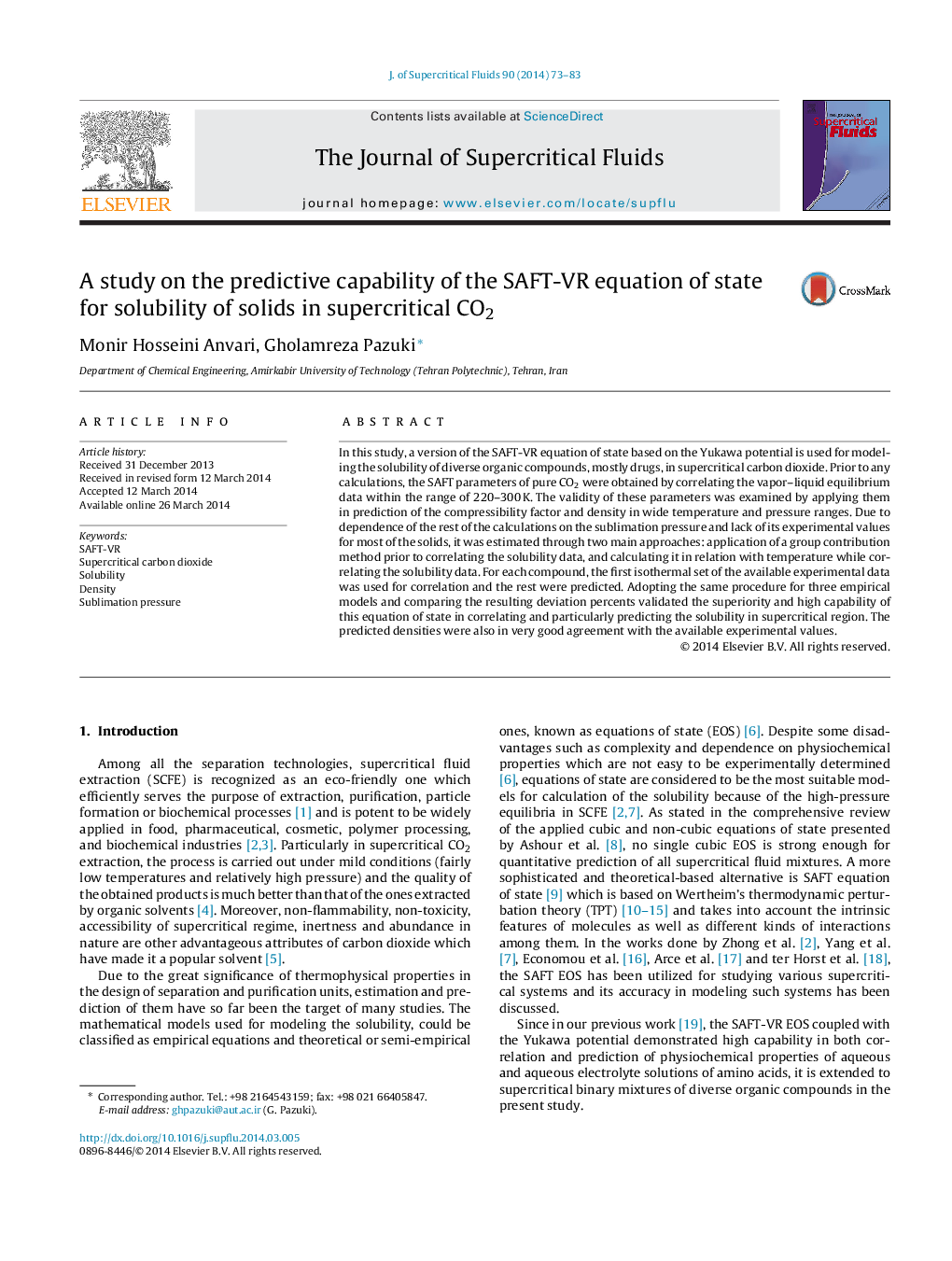| Article ID | Journal | Published Year | Pages | File Type |
|---|---|---|---|---|
| 230514 | The Journal of Supercritical Fluids | 2014 | 11 Pages |
•Application of the SAFT-VR equation of state coupled with the Yukawa potential.•Estimation of sublimation pressure through two approaches: application of a group contribution method and correlation.•Studying the phase behavior of pure CO2 as the solvent in all the studied systems and obtaining its optimum parameters.•Correlation of solids’ solubility in SC-CO2 and comparing the results of the SAFT-VR EOS and three empirical models.•Examining the predictive capability of the SAFT-VR EOS by comparing its results with that of the three empirical models.
In this study, a version of the SAFT-VR equation of state based on the Yukawa potential is used for modeling the solubility of diverse organic compounds, mostly drugs, in supercritical carbon dioxide. Prior to any calculations, the SAFT parameters of pure CO2 were obtained by correlating the vapor–liquid equilibrium data within the range of 220–300 K. The validity of these parameters was examined by applying them in prediction of the compressibility factor and density in wide temperature and pressure ranges. Due to dependence of the rest of the calculations on the sublimation pressure and lack of its experimental values for most of the solids, it was estimated through two main approaches: application of a group contribution method prior to correlating the solubility data, and calculating it in relation with temperature while correlating the solubility data. For each compound, the first isothermal set of the available experimental data was used for correlation and the rest were predicted. Adopting the same procedure for three empirical models and comparing the resulting deviation percents validated the superiority and high capability of this equation of state in correlating and particularly predicting the solubility in supercritical region. The predicted densities were also in very good agreement with the available experimental values.
Graphical abstractFigure optionsDownload full-size imageDownload as PowerPoint slide
